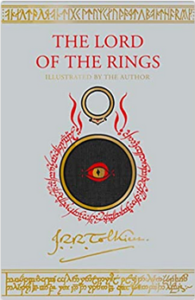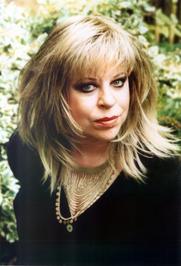SHE by H Rider Haggard (full title “She: A History of Adventure” “is one of the foundational works of fantasy literature, published around the time of The Princess and the Goblin (1858) by George MacDonald, William Morris’ The Wood Beyond the World and The Well at the World’s End, and the short stories of Lord Dunsany.”*
“Several authors, including JRR Tolkien, Rudyard Kipling, Henry Miller, Graham Greene and Margaret Atwood, have acknowledging its importance to their own and others’ writing. With more than 83 million copies sold, the novel is one of the best-selling fictional works of all time and has been translated into 44 languages.” [Wikipedia]
The Leaves of Gold Press edition of SHE includes an introduction written by me. It is also the first edition to contain illustrations from not one but four acclaimed artists who were contemporaries of JRR Tolkien, and whose works he admired:
- Maurice Greiffenhagen
- Charles H.M. Kerr
- E. K. Johnson, and
- G. C. Wilmshurst.
“She” was first published in book form in 1887. The story is an enduring classic, more than a century old. It’s a fantasy adventure packed with action, mystery, wonder, supernatural marvels and beauty, along with violence and darkness. While it bears some of the now-discredited hallmarks of the era in which it was written, it remains an enthralling page-turner. Critics consider it one of the most influential novels in modern literature.
Refreshingly, considering 19th century social attitudes, the story features a strong woman with a complex personality as the central character. Haggard’s representation of womanhood has received both praise and criticism.
SHE is one of those powerful stories whose popularity endures for centuries. The story has been made into movies and radio dramas.
Tolkien and SHE

In common with every writer, Professor JRR Tolkien was influenced by many books. When he was growing up, he greatly enjoyed reading all the works of H. Rider Haggard. He stated in a 1966 interview, “I suppose as a boy SHE interested me as much as anything. . .”
Many interesting parallels can be drawn between “The Lord of the Rings” and SHE. Readers will find echoes of Galadriel and her mirror here, and arguably, even the literary progenitors of Frodo and The One Ring.
Tanith Lee and SHE

Tanith Lee’s superb science fantasy novel THE BIRTHGRAVE, first published in 1975, is also the first novel in The Birthgrave Trilogy. The story follows a nameless protagonist who awakens with amnesia. She travels across a fantastic, epic landscape on a quest to discover her past and her identity. The novel was nominated for the 1975 Nebula Award for best novel.
I was captivated by THE BIRTHGRAVE the moment I began to read it, and it remains one of the favourites on my bookshelves. On re-reading SHE, I began to see Haggard’s influence on Lee’s enchanting fantasy work. A volcano. An exotic, wild landscape. Ancient, ruined cities. Lost civilizations. A powerful, beautiful woman who is close to immortal. . .
Dart-Thornton and SHE

In turn, THE BIRTHGRAVE influenced my own writing. The beauty of Lee’s prose was a revelation to me, but more than that, I found the concept of someone who awakens with no memories, no past, no identity, deeply intriguing. That became the seed of THE BITTERBYNDE TRILOGY.
[Ref: Cornwell, Neil (1990). The Literary Fantastic: from Gothic to Postmodernism. New York: Harvester Wheatsheaf. ISBN 978-0-7450-0804-2. Also Clute, John (2002). Encyclopedia of Fantasy. New York: St Martin’s.]



 This, for me, is an essential writing tip!
This, for me, is an essential writing tip!


 Alan Lee
Alan Lee